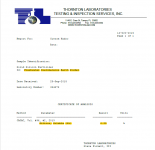neverforget4/20
Member
Thanks. I actually saw a 500ppm increase in K. M3 and AA results. They were basically water only. They got watered with Crab Hydrolysate, Kelp and biologicals 1X. The first results were k1 the second were k3. I feel like that could account for a lot.
I'll post the side by side results.
1 yard/light is pretty hefty. I'd have to go a full 2' plus deep to get that out of my setup. I might go for it. I added all of my prunings back as mulch throughout the cycle, I was worried about the nitrate, but maybe it's good that I did that. The prunings really seemed to be consumed by the soil quite rapidly.
Dont those prunings add quite a bit of K? Under that impression I stopped using those bits as (indoor) compost.
Last edited:




